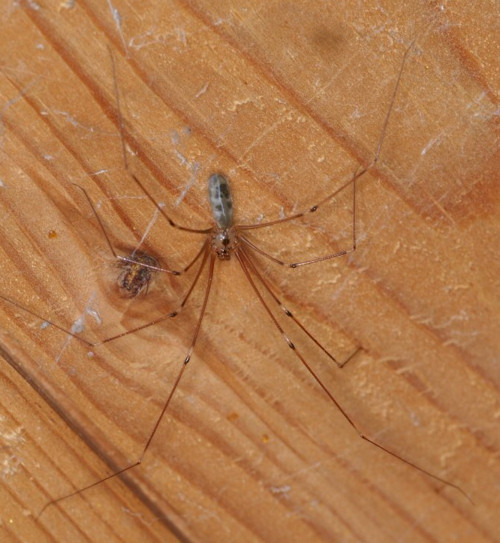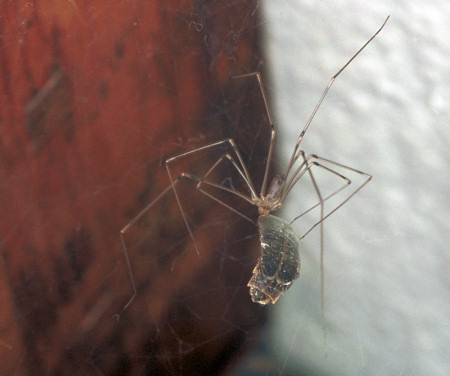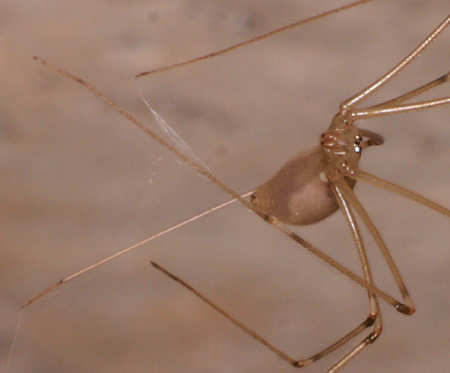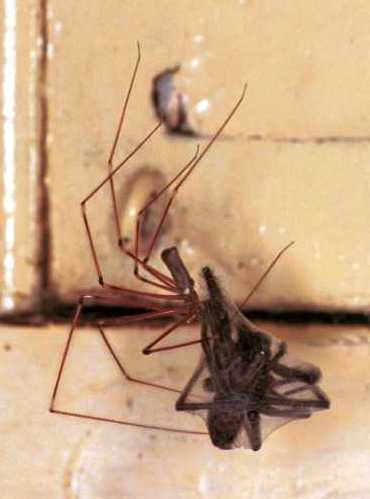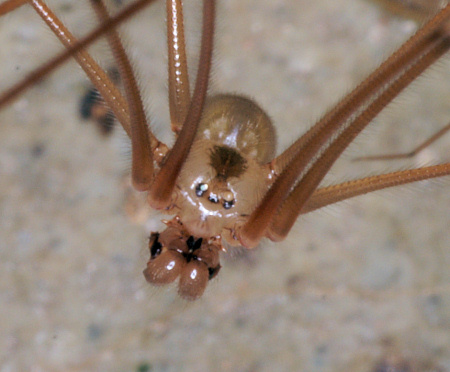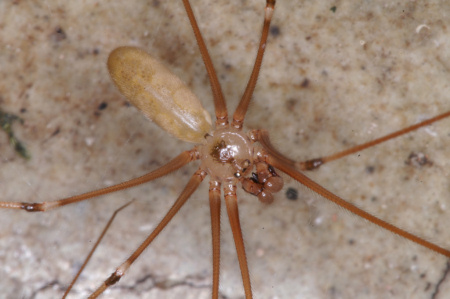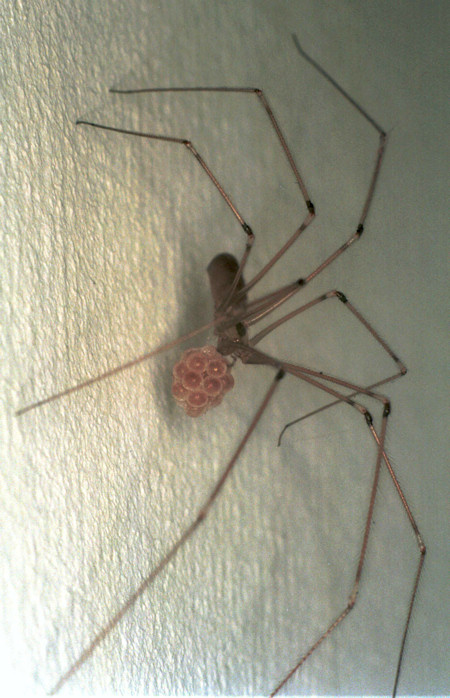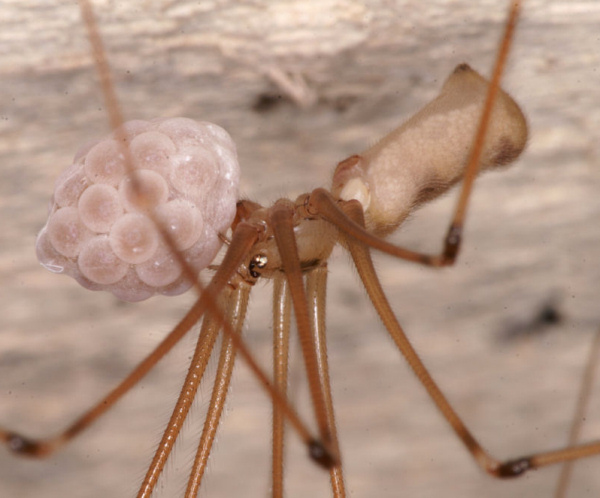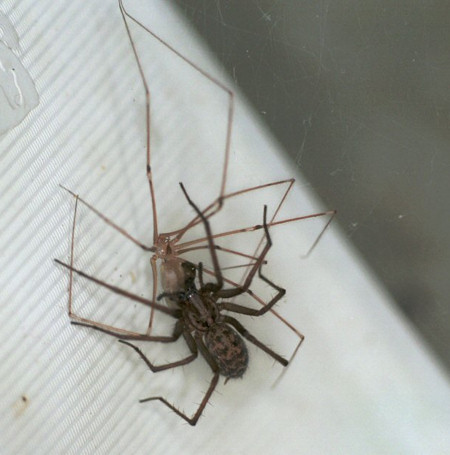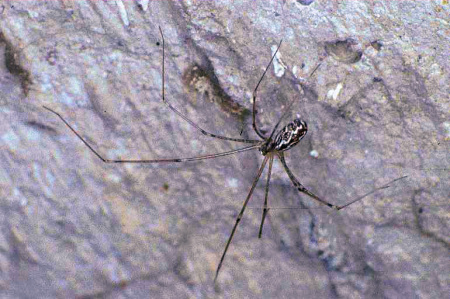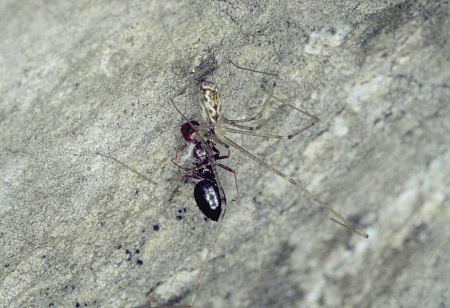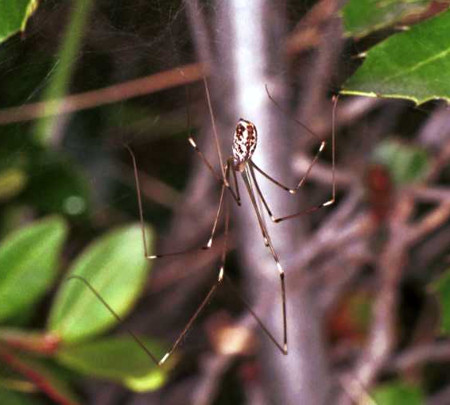Introduction
These spiders have very long legs like the harvestman. Therefore, they are called Daddy-longlegs. The difference between the daddy-longlegs and the harvestman is that in harvestman the cephalothorax and the abdomen is almost fused together which looks like one structure whereas in daddy longleg spiders the cephalothorax and the abdomen are two distinct features connected by a visible narrow tube. Unlike these spiders, the harvestman does not make webs.
The members of the Pholcidae family live in houses and buildings. They make their untidy webs in the corner of a wall or a ceiling. They are also often found in the basement or the cellars, thus being referred to by another common name as the cellar spiders. When they are disturbed or when they are under a threat of attack, they start vibrating in their web violently to scare off and discourage their enemy. Therefore, they are also known by yet another common name of vibrating spiders. The male spider has large palps.
There are three genera of this family found in NW-Europe: Pholcus phalangioides (common), Holocnemus pluchei and Psilochorus simoni (rare).
It is said that the venom of this spider is one of the most poisonous. Since the fangs of these spiders are too small to penetrate the skin, it is not considered a dangerous spider. Many spiders use their venom to kill their prey but the poison of almost all of them is harmless to humans.
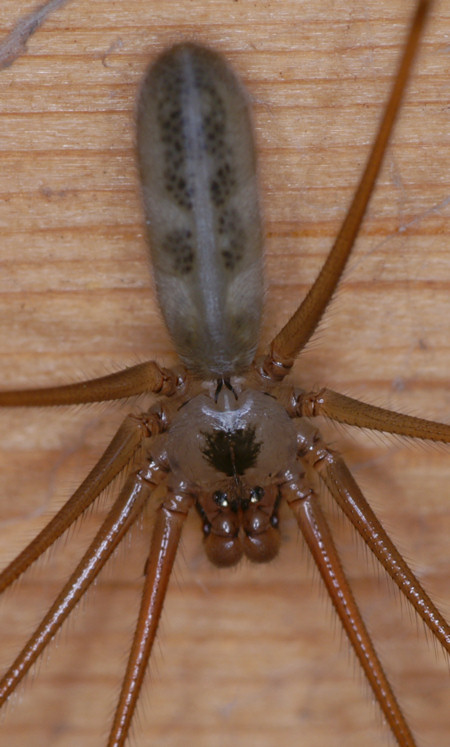
Male Pholcus phalangioides
